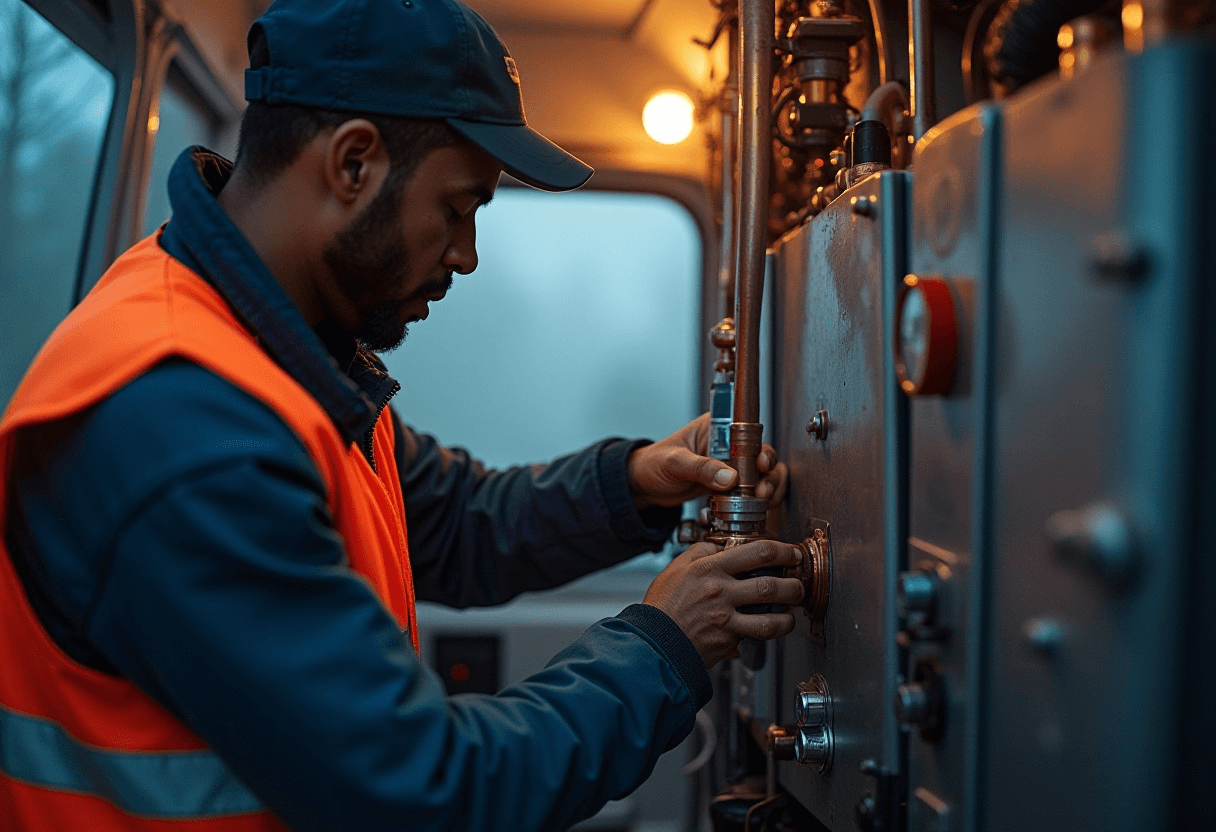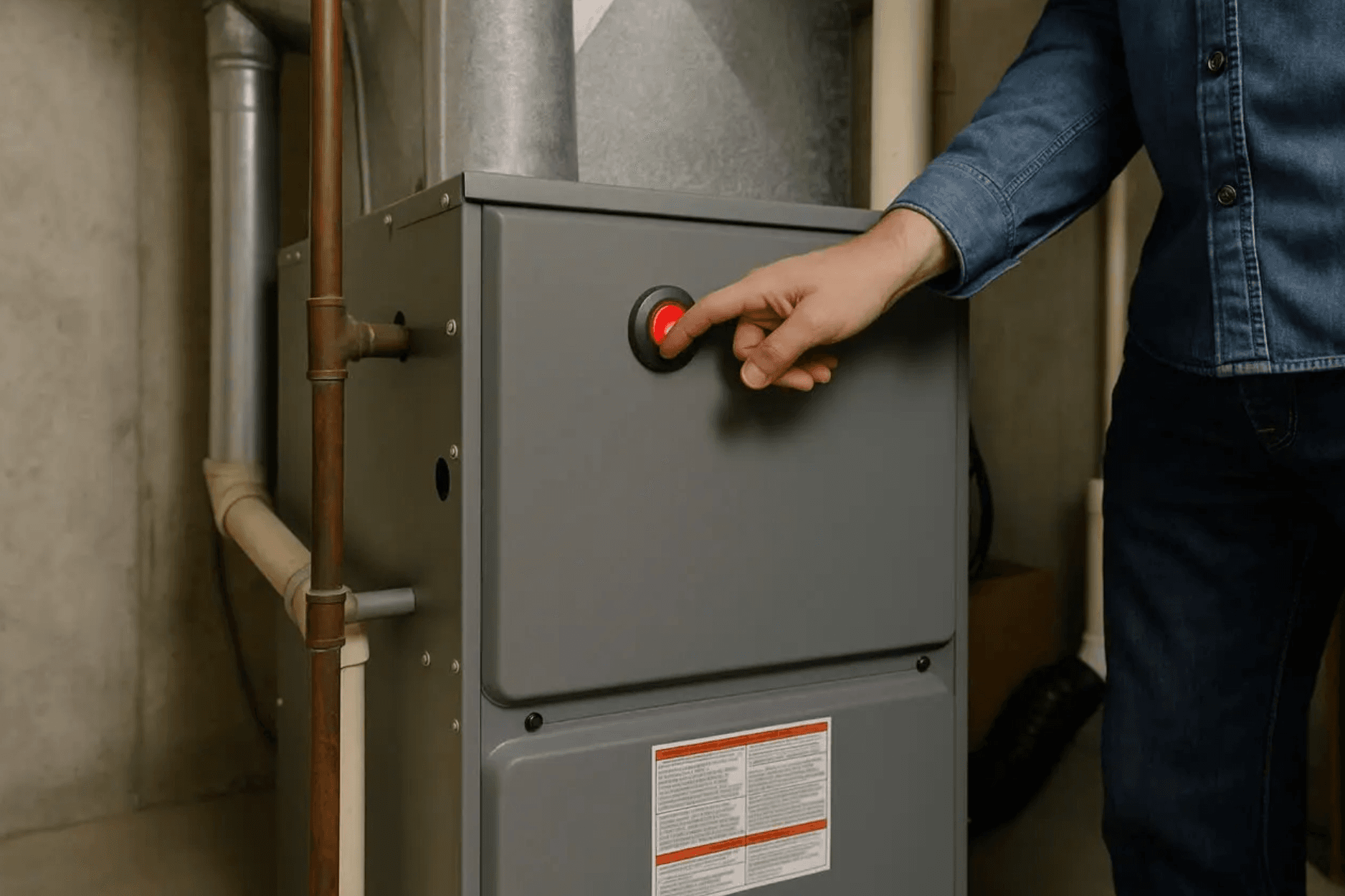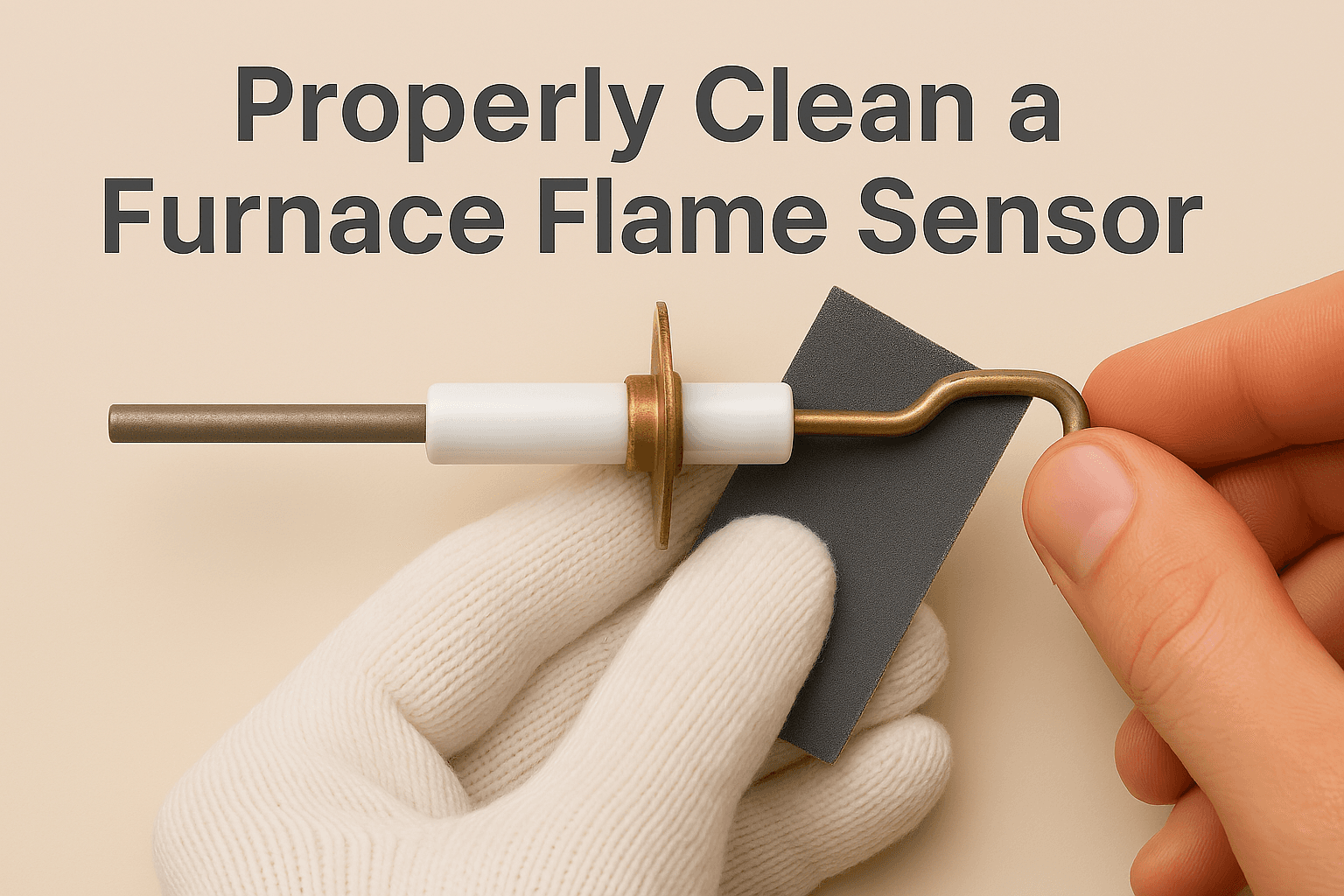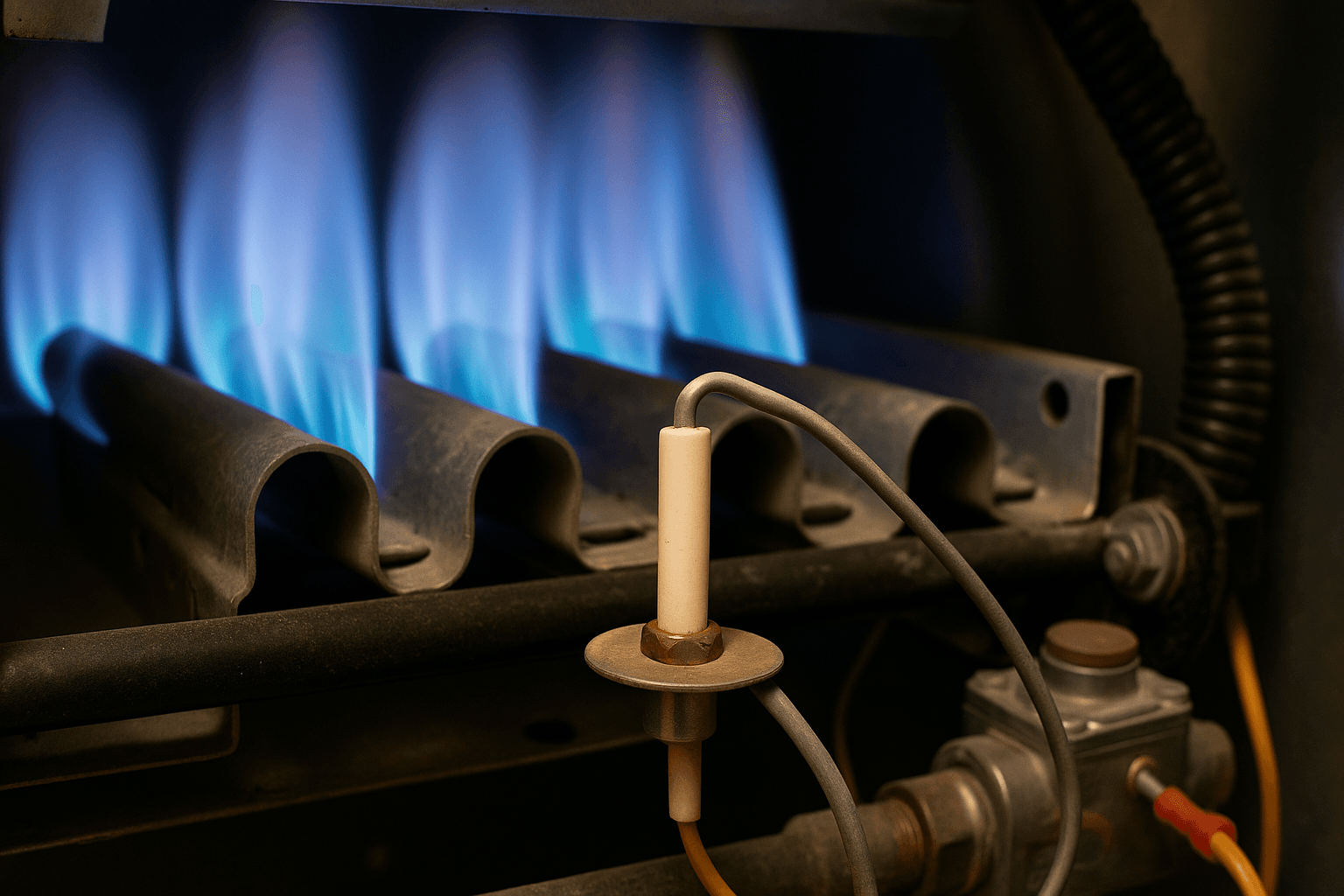Repair help
What is a Cracked Heat Exchanger? Key Symptoms and Solutions
AZparts Team
Published on May 21, 2025
9 min read
As the weather turns colder, home heating systems become essential for keeping families warm and safe. Yet, many homeowners are unaware of the hidden issues that can arise within these systems, especially problems that may pose serious health and safety risks. In this article, AZParts takes a closer look at one of the most critical furnace issues homeowners face: cracked heat exchangers, what causes them, how to recognize the warning signs, and what steps to take to address the problem effectively.

1. What is a Cracked Heat Exchanger?
Cracked heat exchanger in furnace (Source: Google)
A heat exchanger is an important part of a furnace or HVAC system. It transfers heat from the combustion chamber to the air inside your home while keeping harmful gases like carbon monoxide out. Over time, cracks can form due to the constant heating and cooling of the metal. Even small cracks can grow and cause serious safety risks. If a heat exchanger is cracked, it needs to be checked and fixed right away.
Modern heat exchangers are typically made from stainless steel or aluminized steel and are designed to withstand high temperatures and regular thermal expansion. However, no component lasts forever, especially one subjected to such extreme conditions. Most manufacturers design heat exchangers to last between 10-20 years, depending on usage patterns and maintenance quality.
2. What Causes a Heat Exchanger to Crack?
Several factors can contribute to heat exchanger failure. Understanding these causes can help you take preventative measures to extend the lifespan of this essential component:
- Age and natural wear
Heat exchangers naturally deteriorate over time (Source: Google)
Heat exchangers naturally deteriorate over time as the metal undergoes thousands of heating and cooling cycles throughout its lifetime, causing gradual metal fatigue. This repeated expansion and contraction eventually weakens the metal structure, leading to cracks. If your furnace is older, you should be particularly vigilant for signs of heat exchanger damage.
- Overheating
Restricted airflow from dirty filters, blocked vents, undersized ductwork, closed dampers, or blower failures causes heat to build up inside the furnace. Overheating makes the heat exchanger’s metal expand beyond its limits, leading to accelerated wear and cracks.
- Poor maintenance
Regular furnace maintenance is crucial for preventing heat exchanger cracks. Neglecting annual inspections allows small issues to develop into major problems. Professional technicians can spot early warning signs of stress on the heat exchanger and recommend preventative measures before catastrophic failure occurs.
- Improper furnace sizing
A furnace that's too large for your home will short cycle frequently (turn on and off repeatedly in short periods). This constant thermal stress accelerates metal fatigue in the heat exchanger. Conversely, an undersized furnace runs continuously, never shutting off, which can also lead to overheating and premature failure.
- Corrosion
Chemical compounds in the air, especially in coastal areas or homes with certain chemical usage, can accelerate corrosion of the heat exchanger metal. This corrosion weakens the structure and creates vulnerable points where cracks are more likely to form.
- A faulty flame sensor
When the flame sensor fails to detect the burner flame properly, the system shuts down the furnace prematurely as a safety precaution—only to restart moments later. This repeated on-off behavior, known as short cycling, causes rapid heating and cooling that severely stresses the metal of the heat exchanger, significantly increasing the risk of cracks.
To prevent short cycling and prolong your heat exchanger’s life, consider replacing worn-out sensors with a high-quality Flame Sensor of AZParts. Our flame sensors are designed for optimal detection accuracy and durability, helping your system maintain stable operation and avoid unnecessary wear.
Furnace Flame Sensor (Source: AZParts)
By addressing these common issues, especially component failures like flame sensors you can reduce the likelihood of costly damage and ensure your furnace operates efficiently and safely for years to come.
3. Warning Symptoms of a Cracked Heat Exchanger
Detecting a cracked heat exchanger early can prevent dangerous situations and costly repairs. Here are the key warning signs you should never ignore:
3.1 Yellow or flickering burner flames
A yellow or flickering flame suggests incomplete combustion (Source: Google)
In a properly functioning furnace, the flames should be blue and steady. Yellow, flickering, or dancing flames indicate poor combustion, which can result from a cracked heat exchanger disrupting the proper air-fuel mixture. This improper combustion reduces efficiency and increases carbon monoxide production.
If you notice yellow flames or irregular flame patterns, turn off your furnace and call a professional immediately.
3.2 Leaking water
Cracks in the heat exchanger can cause water leaks (Source: AZParts)
A crack in the heat exchanger may result in water seeping out, often appearing as drips beneath the furnace casing. If you notice moisture or puddles around your unit and can't pinpoint the source, it’s wise to contact a qualified heating technician to conduct a thorough inspection.
3.3 Carbon Monoxide Alarms
Pay attention to the Carbon Monoxide Alarm (Source: Freepik)
The most urgent warning sign is when your carbon monoxide detector activates. Carbon monoxide (CO) is an odorless, colorless gas that can be lethal in high concentrations. A cracked heat exchanger can allow this deadly gas to escape into your living spaces. If your CO detector sounds, immediately:
- Evacuate all occupants and pets from the home
- Call the fire department from outside the home
- Do not re-enter until professionals declare it safe
- Have your heating system inspected before reusing it
Never ignore or disconnect a CO alarm. If your detector goes off, it's not a false alarm until proven otherwise. Carbon monoxide poisoning symptoms include headaches, dizziness, nausea, confusion, and fatigue. These symptoms often improve when you leave the home and worsen when you return.
3.4 System performance changes
When a heat exchanger cracks, you may notice changes in your heating system's performance:
- Decreased heating efficiency
- Longer run times to reach desired temperatures
- Uneven heating throughout your home
- Increased utility bills without corresponding usage changes
These performance issues can have multiple causes, but when combined with other symptoms on this list, they strongly suggest heat exchanger problems.
3.5 Strange or unusual odors
Woman smells strange or unusual odors (Source: Google)
A cracked heat exchanger may produce distinctive odors as gases leak into your home's air supply. These smells are often described as:
- Formaldehyde-like
- Chemical or pungent
- Similar to the smell of strong glue
- A burning plastic odor
These odors typically become stronger when the furnace is running. While some odors are normal during the first heating cycle of the season (as dust burns off heating elements), persistent or strong chemical smells require immediate professional attention.
3.6 Banging or whistling noises
Hearing unusual noises coming from your furnace (Source: Google)
Unusual noises coming from your furnace can indicate a cracked heat exchanger. The most common sounds include:
- Metallic banging or popping when the furnace starts or stops
- High-pitched whistling from air escaping through cracks
- Rattling that wasn't present previously
- Booming sounds during ignition
These noises occur because a damaged heat exchanger allows pressure changes and vibrations that wouldn't happen in an intact system. The metal sections may also expand differently when cracked, creating stress and noise.
3.7 Soot buildup
Black soot in your furnace vents (Source: Google)
The presence of black soot around your furnace vents or inside the furnace cabinet often indicates incomplete combustion, which can result from a cracked heat exchanger. This soot contains carbon particles that should have been vented outside but are instead circulating through your home.
3.8 Furnace Age
Check the heat exchanger in the furnace frequently (Source: Google)
While not a direct warning sign, the age of your furnace should influence how vigilantly you watch for other symptoms. Heat exchangers in furnaces older than 15 years are significantly more likely to develop cracks. If your system falls into this category, consider scheduling more frequent professional inspections.
4. Potential Problems Caused by a Cracked Heat Exchanger
A cracked heat exchanger creates several serious problems that extend beyond mere inconvenience. Understanding these consequences emphasizes the importance of addressing this issue promptly.
- Health and safety risks
Wear a mask if there are signs of carbon monoxide (Source: Freepik)
A cracked heat exchanger can silently leak carbon monoxide and other toxic gases into your home, posing serious health risks. Symptoms like headaches, dizziness, confusion, and even death can occur with prolonged exposure. According to the CDC, over 400 Americans die each year from accidental carbon monoxide poisoning unrelated to fires, many linked to faulty heating systems.
- System Inefficiency and Higher Utility Bills
Electricity bill is higher (Source: Freepik)
A cracked heat exchanger compromises your furnace's efficiency. The system will work harder to maintain comfortable temperatures, leading to:
- Increased energy consumption
- Higher utility bills
- More wear and tear on other furnace components
- Shorter overall lifespan of the heating system
Some homeowners report seeing their heating bills increase by 30% or more when their heat exchanger begins to fail.
- Complete System Failure
If left unaddressed, a cracked heat exchanger will eventually lead to complete furnace failure. This often happens at the most inconvenient times—typically during the coldest part of winter when the system is under maximum stress. Emergency replacements are generally more expensive than planned upgrades and may leave you without heat for extended periods during extreme weather.
- Legal and Insurance Implications
Operating a furnace with a known cracked heat exchanger could potentially:
- Violate home insurance policies
- Create liability issues if others are harmed
- Run afoul of local building or safety codes
- Complicate home sale inspections
Many homeowners insurance policies require that heating systems be maintained in safe working order, and a cracked heat exchanger clearly falls outside these requirements.
5. How to Prevent Heat Exchanger Cracks?
While cracked heat exchangers can be dangerous and costly, many of the underlying causes are preventable with proactive care. Here are the most effective strategies to reduce the risk and extend the lifespan of your heating system:
- Schedule Regular Maintenance
Schedule annual inspections with a certified HVAC technician (Source: Freepik)
One of the most important steps in prevention is routine, professional maintenance. Schedule annual inspections with a certified HVAC technician, ideally before each heating season. A trained expert can:
- Identify early signs of wear or corrosion
- Check for proper combustion and airflow
- Clean internal components
- Ensure safety controls are functioning properly
These inspections not only help prevent cracks but also optimize your system’s performance and energy efficiency.
- Replace Air Filters Frequently
Clogged or dirty air filters restrict airflow, causing the furnace to overheat—one of the primary causes of heat exchanger damage. Replace your filters every 1 to 3 months, depending on usage and filter type. If you have pets or allergies, consider changing them more frequently.
- Ensure Proper Ventilation
Blocked vents or closed registers force the furnace to work harder and can lead to overheating. Make sure all vents are clear of furniture or obstructions, and check ductwork regularly for leaks, debris, or blockages.
- Avoid Short Cycling
Short cycling, the frequent turning on and off of your furnace, places stress on the heat exchanger due to rapid temperature changes. One common but often overlooked cause of short cycling is a faulty flame sensor. When the flame sensor fails to accurately detect ignition, it can shut down the furnace prematurely—only to restart moments later. This cycle repeats continuously, accelerating thermal fatigue on the metal.
To prevent this, be sure to test and clean the flame sensor during regular maintenance. If it is malfunctioning, replacement is essential.
Regular professional maintenance and early attention to warning signs are key to preventing and minimizing damage. To explore the full range of options, check out AZParts’ furnace parts offering a wide variety of high-quality components such as flame sensors, igniters, blower motors, and other essential parts for heating systems. Whether you're looking for reliable flame sensors to prevent short cycling or other parts to reduce stress on the heat exchanger, AZParts delivers trusted solutions to keep your system running efficiently and help you avoid costly repairs.
Contact Information
- 8 The Green, Ste A, Dover, Delaware 19901-3618, United States
- support@azparts.com
Furnace
Further Reading
Further Reading





